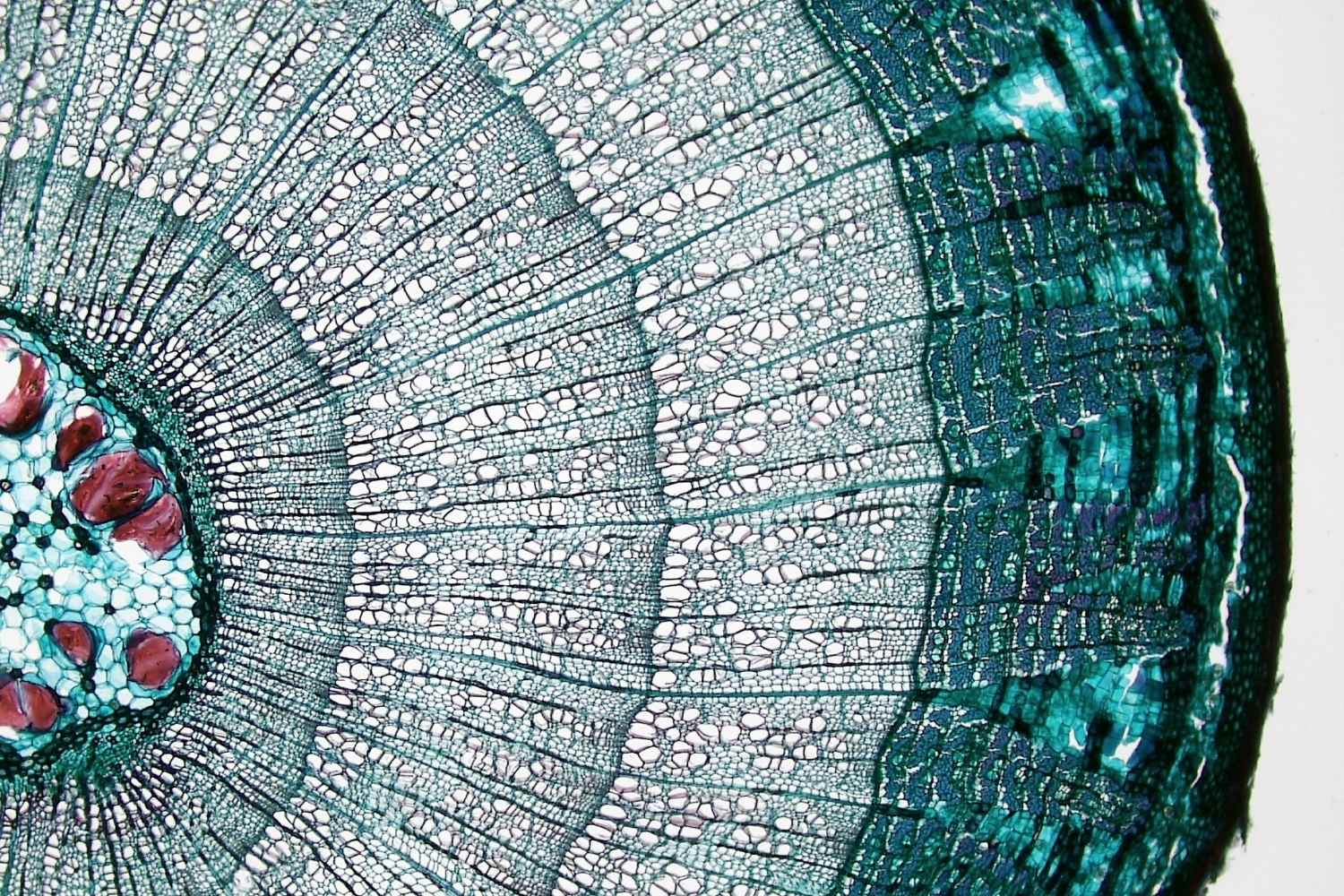
What is vascular cambium? Vascular cambium is a type of plant tissue found in many vascular plants. It plays a crucial role in the growth of plants by producing new layers of xylem and phloem. These layers help transport water, nutrients, and food throughout the plant. Without vascular cambium, trees and shrubs wouldn't be able to grow thicker and stronger over time. This tissue is located between the xylem and phloem in the stems and roots. Understanding vascular cambium can help us appreciate how plants grow and thrive. Ready to learn more? Let's dive into 27 fascinating facts about this essential plant tissue!
What is Vascular Cambium?
Vascular cambium is a type of plant tissue found in many vascular plants. It plays a crucial role in the growth and development of plants, especially in the formation of wood and bark. Let's dive into some fascinating facts about this essential plant component.
-
Vascular cambium is a lateral meristem, meaning it contributes to the thickness of the plant rather than its length.
-
This tissue is responsible for producing secondary xylem (wood) and secondary phloem (inner bark).
-
Vascular cambium is found in dicotyledons (dicots) and gymnosperms but is absent in monocotyledons (monocots).
Structure and Function
Understanding the structure and function of vascular cambium helps us appreciate its role in plant growth.
-
The vascular cambium forms a continuous ring in the stems and roots of plants.
-
It consists of two types of cells: fusiform initials and ray initials.
-
Fusiform initials are elongated cells that produce the vertical elements of the xylem and phloem.
-
Ray initials are shorter and produce the horizontal elements, contributing to the radial transport of nutrients.
-
The activity of the vascular cambium is seasonal, with more growth occurring during favorable conditions like spring and summer.
Growth and Development
The growth and development of vascular cambium are influenced by various factors, including environmental conditions and plant hormones.
-
Auxins, a type of plant hormone, play a significant role in regulating the activity of the vascular cambium.
-
The cambium's growth rate can be affected by temperature, water availability, and nutrient supply.
-
In temperate regions, the vascular cambium becomes dormant during winter and reactivates in spring.
-
The annual rings seen in tree trunks are a result of the seasonal activity of the vascular cambium.
Importance in Wood Formation
The vascular cambium is vital for wood formation, which has numerous ecological and economic implications.
-
Secondary xylem produced by the vascular cambium forms the bulk of the wood in trees.
-
The properties of wood, such as density and strength, are influenced by the activity of the vascular cambium.
-
Hardwood and softwood are distinguished based on the type of cells produced by the vascular cambium.
-
In hardwoods, the vascular cambium produces vessels, fibers, and parenchyma cells.
-
In softwoods, it primarily produces tracheids and parenchyma cells.
Role in Plant Healing and Regeneration
Vascular cambium also plays a crucial role in the healing and regeneration of plants.
-
When a plant is wounded, the vascular cambium can produce new cells to repair the damage.
-
This tissue helps in the formation of callus, a mass of undifferentiated cells that cover the wound.
-
Over time, the callus differentiates into new vascular tissue, restoring the plant's vascular system.
Evolutionary Significance
The evolution of vascular cambium has had a profound impact on the success of vascular plants.
-
The development of vascular cambium allowed plants to grow taller and thicker, giving them a competitive advantage.
-
This tissue enabled the formation of extensive root and shoot systems, improving water and nutrient uptake.
-
The ability to produce wood allowed plants to colonize new habitats and survive in diverse environments.
Vascular Cambium in Different Plant Species
Different plant species exhibit variations in the structure and function of vascular cambium.
-
In some species, the vascular cambium can produce cork cambium, contributing to the formation of bark.
-
Certain plants, like cacti, have a specialized vascular cambium adapted to their unique growth conditions.
-
In woody vines, the vascular cambium can produce both wood and flexible tissues, allowing them to climb and support themselves.
-
Some plants, like palms, lack a vascular cambium, which limits their ability to increase in girth.
Understanding the vascular cambium provides insight into the complex mechanisms of plant growth and adaptation. This tissue not only contributes to the structural integrity of plants but also plays a vital role in their survival and evolution.
The Final Word on Vascular Cambium
Vascular cambium might seem like a small part of a plant, but it plays a huge role. This thin layer of cells is responsible for the growth of stems and roots, making it essential for the plant's overall health. Without it, trees and plants wouldn't be able to grow thicker and stronger each year.
Understanding vascular cambium helps us appreciate how plants develop and adapt to their environments. It also sheds light on the intricate processes that keep our green friends thriving. So next time you see a towering tree or a blooming flower, remember the vascular cambium working behind the scenes.
This knowledge not only deepens our connection to nature but also highlights the importance of preserving our plant life. Keep exploring the wonders of the plant world, and you'll always find something fascinating.
Was this page helpful?
Our commitment to delivering trustworthy and engaging content is at the heart of what we do. Each fact on our site is contributed by real users like you, bringing a wealth of diverse insights and information. To ensure the highest standards of accuracy and reliability, our dedicated editors meticulously review each submission. This process guarantees that the facts we share are not only fascinating but also credible. Trust in our commitment to quality and authenticity as you explore and learn with us.
